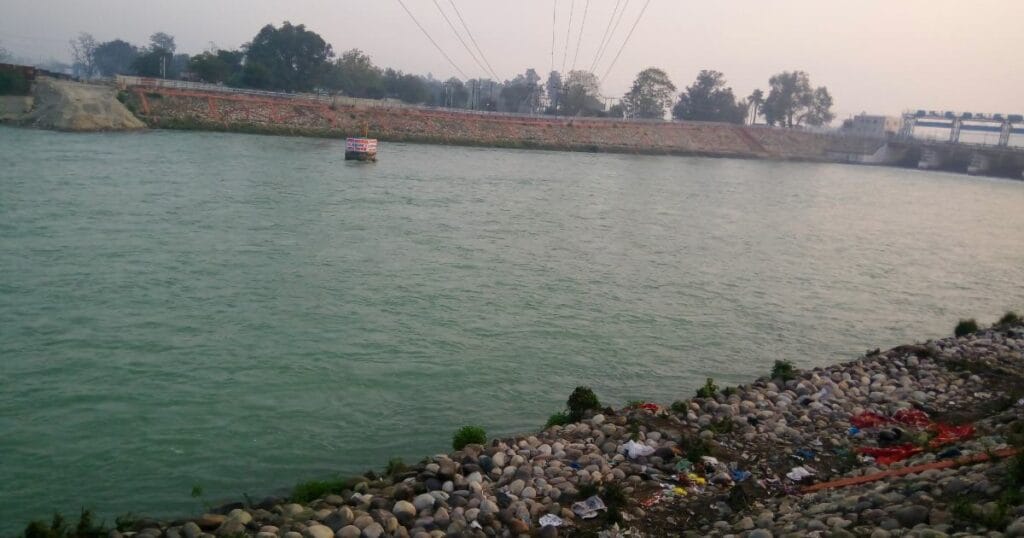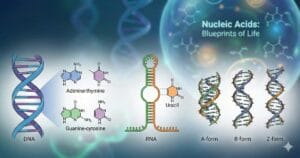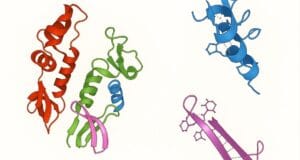
COMPETITIVE EXAM MCQs SERIES of ENVIRONMENTAL SCIENCE for UGC-NET/JRF, SLET, ARS, GATE, and other entrance tests – Contemporary Environmental Issues: India’s National River Conservation Plan.
Syllabus Outline
- Objectives and execution of the National River Conservation Plan
- Evolution of river conservation efforts in India (e.g. Ganga Action Plan, Yamuna Action Plan, expansion into the National River Conservation Plan in 1995).
- Components of the National River Conservation Plan
- Namami Gange Programme, National Mission for Clean Ganga and Jal Shakti Abhiyan
- Monitoring mechanisms, use of technology, community participation and river rejuvenation projects.
This quiz contains concept-based, most frequently asked 25 MCQs of “Contemporary Environmental Issues: India’s National River Conservation Plan”. Each question has a single correct/most appropriate answer.
*****
1. The National River Conservation Plan (NRCP) in India was launched in which year?
A) 1986
B) 1995
C) 2004
D) 2014
2. The Namami Gange Programme primarily aims at:
A) Cleaning and rejuvenation of the river Ganga
B) Preventing the construction of dams on Ganga tributaries
C) Keeping the Ganga water away from urban exposure within the basin to maintain its cleanness.
D) Enhancement of rainwater catchment into the tributaries of River Ganga
3. The acronym ‘NMCG’ in the context of river conservation in India stands for:
A) National Mission for Clean Ganga
B) Namami Mission for Clean Ganga
C) National Monitoring for Contaminated Groundwater
D) Network of River Management Councils for Ganga
4. A major component of the National River Conservation Plan (NRCP) is:
A) Building embankments and river front
B) Constructing sewage treatment plants for cities along rivers
C) Monitoring of River water quality across the river
D) Monitoring anthropogenic activities across the river
5. The Yamuna Action Plan, initiated to clean the Yamuna river, is a bilateral project between India and ___________.
A) France
B) Japan
C) USA
D) Russia
6. What does the term ‘Aviral Ganga’ signify?
A) Ganga flows continuously without interruption
B) High bacteriophages keep water clean and have high self-cleaning potential
C) Ganga being worshipped as a deity
D) A specific stretch of the Ganga with high organic load
7. Under the National River Conservation Plan, which of the following measures are typically included?
I – Interception and diversion of sewage
II – Construction of sewage treatment plants
III – Riverfront development projects
IV – Construction of hydroelectric dams.
A) I, II and III only
B) I, II, III and IV
C) II and IV only
D) I and II only
8. The Namami Gange programme involves which of the following activities?
I – Construction/rehabilitation of sewage treatment plants
II – Development of riverfronts and ghats
III – Afforestation in the river catchment area
IV – Promoting traditional wooden crematoria to control the river pollution
A) I, II and III only
B) II and III only
C) I and II only
D) All of the above
9. Which of the following authorities was constituted in 2009 to plan, finance, monitor and coordinate efforts to clean and conserve the river, Ganga?
A) National Water Commission
B) National Ganga River Basin Authority (NGRBA)
C) Namami Mission for Clean Ganga
D) National Mission for Clean Ganga
10. Which ministry or department is primarily responsible for the implementation of the Namami Gange programme?
A) Ministry of Environment, Forest and Climate Change (MoEF&CC)
B) Ministry of Jal Shakti
C) Ministry of Home Affairs
D) Prime Minister’s Office (PMO)
11. Which of the following activities is part of Jal Shakti Abhiyan?
I – Rainwater harvesting and water conservation,
II – Enumerating and geo-tagging water bodies.
III – Construction of hydropower projects
IV – Setting up Jal Shakti Kendras in districts
A) I and IV only
B) I, II and IV only
C) II and IV only
D) All of the above
12. Which of the following best describes the scale of the Namami Gange programme in terms of coverage?
A) Only the main stem of the river Ganga in the state of Uttar Pradesh
B) River Ganga and its major tributaries across eight states
C) All rivers in India, including Brahmaputra
D) Major rivers only in the southern peninsula
13. In river basin management, ‘ecological flow’ refers to:
A) The minimum biomass across the river to sustain riverine ecosystems
B) The minimum stream flow needed to sustain riverine ecosystems
C) The maximum stream flow needed to sustain riverine ecosystems
D) The average biomass across the river to sustain the riverine ecosystem
14. Assertion (A): The National Mission for Clean Ganga (NMCG) was constituted to replace the National Ganga River Basin Authority (NGRBA) in 2016.
Reason (R): The NMCG is registered as a society under the Societies Registration Act, 1860, as per an Act of Parliament.
A) Both A and R are true, and R correctly explains A
B) Both A and R are true, but R does not explain A
C) A is true, but R is false
D) A is false, but R is true
15. Assertion (A): The Namami Gange programme emphasises achieving “Aviral Dhara” and “Nirmal Ganga”.
Reason (R): It includes interventions like sewage treatment plants, riverfront development, and real-time monitoring to restore river flow and quality.
A) Both A and R are true, and R correctly explains A
B) Both A and R are true, but R does not explain A
C) A is true, but R is false
D) A is false, but R is true
16. The “Matri Ganga” scheme, encouraging women’s participation in river conservation, was launched in which state?
A) Uttarakhand
B) Uttar Pradesh
C) Jharkhand
D) Odisha
17. Satellite remote sensing in river management is used to:
I – Monitor land use changes across the river
II – Detect algal blooms in river basins
III – Measure dissolved oxygen in river water to understand the pollution load
IV – Measure the flow of the river to estimate sewage discharge in the river
A) I only
B) I and II
C) I, II and III
D) I, II, III and IV
18. The “Amrit Sarovar Mission”, launched in 2022, aims to:
A) Develop and rejuvenate 75 water bodies in each district of India
B) Build 75 dams on rivers to facilitate agriculture in each state of India
C) Plant 75 crore saplings across the Narmada River, having the Sardar Sarovar Dam built under the Narmada Valley Project
D) Aware about Mission LiFE: LiFEStyle For Environment
19. In 2023, at the United Nations COP28 summit, India launched the “Global River Cities Alliance”. This alliance is intended to:
A) Share best practices among cities with major rivers globally
B) Establish a global fund for hydro projects for smart cities across the global river
C) Link all global river-port cities via rail
D) Conserve and protect global river cities
20. Under the National River Conservation Plan (NRCP), the funding pattern for approved projects is typically shared between the Central and State Governments in the ratio:
A) 100% Central and 0% State
B) 90% Central and 10% State
C) 50% Central and 50% State
D) 25% Central and 75% State
21. The National River Conservation Plan (NRCP) primarily emphasises which activities?
I – Sewage interception and treatment
II – Afforestation along river banks
III – Promotion of industrial pollution control by PCBs
IV – Construction of river inter-linking projects.
A) I and II only
B) I, II and IV only
C) II and IV only
D) I, III and IV only
22. Which of the following is NOT a function of the National Mission for Clean Ganga (NMCG)?
A) Coordination of state-level Ganga cleanup programs
B) Implementation of pollution abatement projects on the Ganga
C) Management of hydroelectric power generation projects
D) Monitoring the progress of Namami Gange initiatives
23. Which of the following interventions is promoted by the Namami Gange programme to handle traditional riverbank crematoria waste?
A) Promotion of electric crematoria
B) Building new wooden pyres on concrete platforms
C) Ban on cremation activities
D) Waste management facilities at crematoria
24. A common criticism of the early river cleaning schemes was that they:
A) Relied entirely on central funding with no state participation
B) Focused only on point-source industrial pollution and ignored public involvement
C) Lacked sufficient community involvement and awareness efforts
D) Directed all funds towards rural areas, neglecting cities
25. One of the bioremediation approaches used in river cleaning initiatives is:
A) Use of artificial wetlands to treat sewage
B) Release of activated sludge into the river for bioremediation of pollutants discharged into the river
C) Segregation and removal of non-biodegradable pollutants for efficient bioremediation of biodegradable pollutants
D) Bioaugmentation and biostimulation of the river
*****
Previous: Rainwater harvesting and Groundwater recharge
Next: Climate Change and Global Warming
References
- R. Rajagopalan (2015) ENVIRONMENTAL STUDIES: FROM CRISIS TO CURE, Oxford University Press, Third edition
- Bharucha, E. (2013). Textbook of Environmental Studies. Universities Press, 3rd edition
- Abha Vashistha and Surabhi Johari (2020). Contemporary Environmental Issues and Challenges, Bloomsbury Prime
- William Cunningham and Mary Cunningham (2009) Environmental Science: A Global Concern, McGraw-Hill Education, 11th edition

